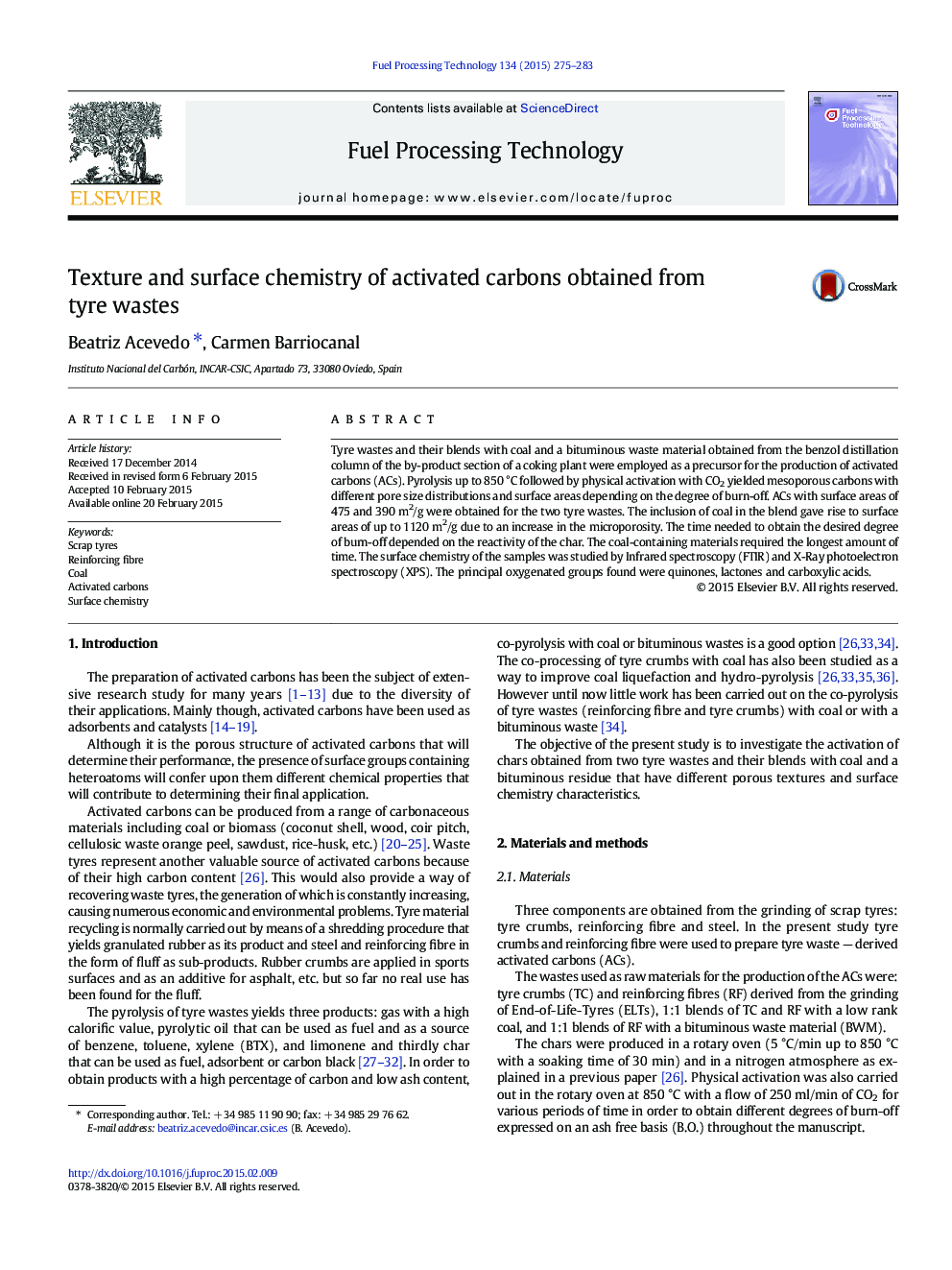| Article ID | Journal | Published Year | Pages | File Type |
|---|---|---|---|---|
| 6657054 | Fuel Processing Technology | 2015 | 9 Pages |
Abstract
Tyre wastes and their blends with coal and a bituminous waste material obtained from the benzol distillation column of the by-product section of a coking plant were employed as a precursor for the production of activated carbons (ACs). Pyrolysis up to 850 °C followed by physical activation with CO2 yielded mesoporous carbons with different pore size distributions and surface areas depending on the degree of burn-off. ACs with surface areas of 475 and 390 m2/g were obtained for the two tyre wastes. The inclusion of coal in the blend gave rise to surface areas of up to 1120 m2/g due to an increase in the microporosity. The time needed to obtain the desired degree of burn-off depended on the reactivity of the char. The coal-containing materials required the longest amount of time. The surface chemistry of the samples was studied by Infrared spectroscopy (FTIR) and X-Ray photoelectron spectroscopy (XPS). The principal oxygenated groups found were quinones, lactones and carboxylic acids.
Related Topics
Physical Sciences and Engineering
Chemical Engineering
Chemical Engineering (General)
Authors
Beatriz Acevedo, Carmen Barriocanal,
